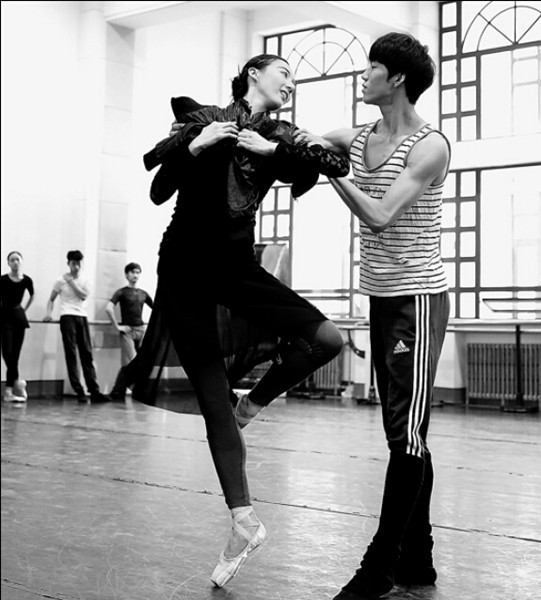 |
|
Dancers of the National Ballet of China rehearse for the Beijing shows in April, as a tribute to the 80th anniversary of the Red Army's Long March.[Photo/China Daily] |
To prepare for this year's shows, members of the National Ballet of China visited some landmark locations along the Long March's route last summer. During the trip, they went to a few memorial museums, where tour guides and visitors from different walks of life impressed choreographers Fei Bo and Wang Sizheng.
"The tour guides keep repeating (the same) words in the course of a day. Some become emotional every time they narrate the stories, some do it without appearing emotional. To me, they present an interesting response to the Long March, like a dialogue with history," Fei says during rehearsals for the shows in Beijing.
Wang is impressed by the visitors' responses. "Some listen to the tour guides carefully, not missing their words, while some ignore them, looking to discover the museum by themselves, and still others walk around so quickly that I feel they won't remember anything later."
He recalls once meeting a former Red Army soldier during one such museum visit. Accompanied by his family members, the old man appeared lost in his memories as tears filled his eyes.
Fei and Wang have built such stories into their "dialogue about that age" piece.
Okan Dann from the Hamburg Ballet will present his interpretation of the war through a love story in which a young woman is separated from her lover when he joins the army.
"My piece is about love, in a simple sense. We all fall in love and know how it feels, but today not many people fight in wars," he says, adding that his dance piece will show what happens when two young people meet, fall in love and a war breaks out.
Another piece, Now There, by Li Jun, Su Yang and Li Yang also interprets the war through a long love story lasting three generations.
"We also want to discuss what a war means to an individual. When we read history and visit related places, we don't come across too many stories of individual lives in wartime - people died, women lost their husbands and families lost their sons," says Li Yang.
According to Feng Ying, president of the National Ballet of China, the annual shows that have been held for the past seven years have discovered many young talented artists and the general direction of Chinese contemporary dance.
"It's our 'long march' that we explore all possibilities of dance, not only classical ballet," she says.